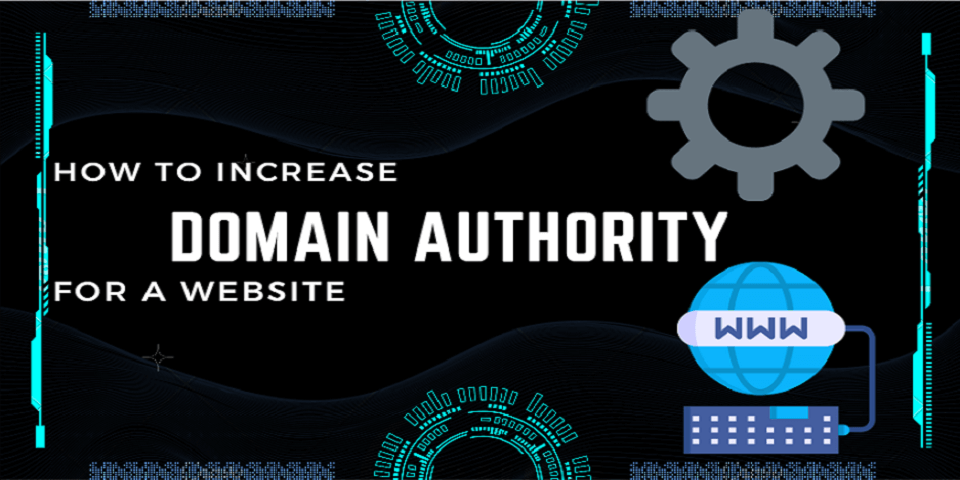What is SEO Outreach?
SEO or Search Engine Optimization Outreach is a step-by-step process that aims to attract as many high-quality backlinks to your website as possible.
During this process, you reach out to reputable sites with high domain authority to have them link back to high-quality web content or blogs on your website.
This way, you don’t have to wait too long to generate organic backlinks, enhancing your overall SEO efforts.
The ultimate goal is to create a solid backlink profile for your website to help its pages rank higher in the SERPs.
What are the Benefits of Effective SEO Outreach Services?
SEO outreach is one of the best SEO practices to get quality backlinks, improve your site’s online visibility, build trust, and generate a steady stream of organic traffic.
Here are the top five benefits of SEO outreach campaigns that you need to know about:
1. Increased Website Traffic
The key focus of any SEO strategy, including outreach campaigns, is to generate more organic traffic and turn them into paying customers.
There are two ways the SEO outreach campaigns can help you fulfill this goal:
A) Through Referrals: When people online see reputable sites link to your web content or blogs, they will be more likely to click on the link and come to your web pages to satisfy their curiosity. This way, you can get the precious referral traffic.
B) Through Increase in SERP Ranking: Your site’s visibility in the SERPs will increase with more quality backlinks. More visibility means more organic traffic to your site.
2. Rank Your Site Higher on the Top Search Engines
The first goal of any SEO strategy is to push your website to the top of the search engine results for the relevant keywords. Link-building outreach is one of the key contributing elements that can make your web pages rank higher in the SERPs quickly.
If your website gets many backlinks from multiple reputable sites in your niche, your site’s domain authority will eventually increase. In turn, the search engine algorithms will find your site to be more relevant in your industry or niche.
3. Enhanced Brand Visibility
With outreach campaigns for SEO, you can increase your company or brand’s awareness among your target audience.
You can reach out to famous bloggers, influencers, and reputable brands and work together with them to improve your site’s reach exponentially.
As you do it, you will be able to expose your site and brand to highly relevant groups of audiences. This way, more people will recognize your brand, and you will get referral traffic that has a high chance of converting into paying customers.
4. Ensure Consistent Content Visibility
Gone are the days when you could rank in Google SERPs just by publishing tons of 500-word, keyword-stuffed blogs. Working with link farms to buy hundreds of backlinks from random sites won’t work either.
These days, search engines consider them as black hat SEO tactics. And if they find you using them, the search engine algorithms will impose severe penalties on your site.
But with well-planned link-building outreach efforts, you can get valuable backlinks from authoritative sites fair and square.
The outreach campaign will generate a steady flow of quality backlinks to your site. It will fortify your backlink profile and keep your site in the limelight in the SERPs for a long time.
5. Create Valuable Relationships
Link-building outreach activities always need you to contact business leaders, reputable bloggers, and influencers who are working in the same industry as you.
Naturally, the outreach campaigns allow you to create many valuable relationships. Relationships that have the potential to go a long way.
As a business or website owner, you can foster these relationships, create new SEO collaborations, and drive more traffic to your site for a long, long time.
5 Types of Backlinks You Can Get from SEO Outreach
1. Guest Posting
Guest posting is one of the best SEO outreach strategies to get high-quality backlinks from reputable sites. In guest posting outreach, you reach out to the owners of reputable blogs and pitch your blog ideas in an attempt to get new links back to your site.
If you get approval, you will write an informative blog post for their website. The blog post will have a hyperlink that links back to a relevant web page or article published on your site.
This way, the blogger you reached out to will get a quality, informative, and fully SEO-optimized blog post. And you will get a valuable backlink to your site in turn.
It’s a win-win deal for both of you.
2. Infographics
Any valuable or informative asset on your website makes it easier for you to reach out to new people and ask them to give you backlinks. Infographics are one such asset.
So, if your site has awesome infographics with a lot of helpful data and statistics, you can ask owners of relevant sites to provide you with inbound links to your website.
3. Resource Pages
Many site owners create multiple resource pages with links to a variety of tools, apps, services, infographics, blog posts, and other resources. They often do it to help their audience find their needs in one place, increasing their overall user experience.
If your business provides information, products, or services relevant to these resource pages, you can reach out to the site owners.
This way, you can list your product, blog posts, or services on their resource pages. And in return, you get valuable links from trusted brands back to your site.
4. Link Reclamation
Link reclamation is exactly what it sounds like. This is a process to get back the backlinks that have been lost for some reason.
For example, let’s say that your website got a backlink from site “A” a few months ago. However, during your backlink profile check using SEO tools, you found that the backlink from the site “A” has been removed or lost.
So, if you think that your site’s content is still relevant and it can benefit the site “A”, you can reach out to the owner of the site “A” to get your link back again.
5. Broken Link Building Strategy
Did you find reputable websites with broken links that are highly relevant to your site’s published content? If that’s the case, you can use the broken link-building strategy to get quality backlinks to your site.
The idea behind this strategy is rather simple. No website owner likes broken links.
So, you have to reach out to the site owner who has a broken link and let them know that you have online resources relevant to the link in your site. Finally, add a proposal to replace the broken link with a relevant page on your website.
This will improve their readers’ experience and you will get high-quality backlinks.
How to Craft an Effective SEO Outreach Strategy?
Step 1: Building Your Outreach Blueprint
The first step in creating a good outreach strategy is to create a practical outreach blueprint. This blueprint will contain your SEO goals, the steps you will take to realize them, and other elements like outreach templates.
The blueprint will ultimately help you:
- Set realistic goals
- Find reputable websites with high DA
- Craft personalized email outreach templates
- Track the success rate of your link-building campaigns
Step 2: Identifying Target Keywords
Once you’re done crafting an effective outreach blueprint, it’s time to work on identifying the target keywords.
It will help you find relevant topics, understand the search intent of your target audience, and find blogs and websites that align with your link-building goals.
What’s more, finding the target keywords will also allow you to create relevant content that will help you with your outreach goals.
Step 3: Identifying Target Websites to Reach Out
The next step is to identify the prospective blogs, influencers, and publications relevant to your site’s offers and content. As long as your website’s content or offer is relevant to their websites, there is a high chance of receiving inbound links from them.
Your target website must:
- Have high domain authority
- Be reputable and trusted by its audience
- Have a high monthly traffic volume
- Have pages or content relevant to your business website and its offers
Step 4: Create Compelling Outreach Content
Your website must have highly valuable, compelling content that is relevant enough for other sites to link back to your web pages. And if you don’t have them yet, you just need to create them.
It can be informative blog posts, insightful infographics, or any other content that is relevant to your and other site owners’ audience.
You can also offer to write well-researched and SEO-friendly guest posts to other site owners to get inbound links to your site.
As long as you craft content that offers immense value, it will be easier for you to get tons of high-quality backlinks from reputable sites.
Step 5: Reaching Out to the Prospects
Once you have enough compelling outreach content, it’s time to craft your outreach message and reach out to the prospects using several channels.
You can reach out to the blogger, site owners or influencers using email, social media, or through other channels.
The key here is to be respectful and concise. Your message must highlight how working with you and linking back to your site will be beneficial for both of you.
Step 6: Following Up on the Outreach Efforts
Not everyone will respond to your messages on your first attempt. Many prospects might have read your email but forgot to follow up. Meanwhile, others might not be interested in your offer.
So, if you don’t get a response, you should send a follow-up email restating your request and ask if they have any concerns.
Give your prospects at least 48 hours to respond before sending a follow-up email. And if any of them don’t respond even after the third follow-up message, it’s time to give up on them.
Step 7: Review and Analyze
You must track, review, and analyze the results of your SEO outreach strategy to see if your campaigns are producing positive results.
The crucial metrics you should track here are:
- Your website traffic
- The number of new backlinks
- Keyword ranking
- Email open rates, response rates, and conversion rates
Tracking these numbers will show you if your campaign is successful and help you make informed decisions.
Overcoming Common Challenges of SEO Outreach
The SEO backlink outreach campaigns have their own set of challenges that you need to overcome to make them successful. Here’s a list of challenges you must overcome to generate quality backlinks using your outreach strategy:
1. Dealing with Rejection and Non-response
As we have mentioned before, not all of your prospects will open your outreach emails or respond to them. And even if they do, they might reject your request for various reasons.
To decrease the rejection rate and non-response, you must:
- Craft personalized outreach emails
- Find highly relevant websites or prospects
- Showcase a few compelling content published on your site that they might be interested in
- Be professional and don’t be overly pushy
2. Adapting to Algorithm Changes
Search engines are updating their algorithms more frequently than ever to eliminate and penalize the black-hat link-building attempts. And your outreach strategy must also keep adapting to these changes to keep your site out of the gray zone.
To do that, you must:
- Always keep an eye on new Google algorithm updates
- Stay out of unnatural link patterns and the influence of link farming
- Always focus on reputable sites for backlinks
3. Avoiding Common Outreach Mistakes
If you’re new to SEO outreach, you might make several common mistakes like using generic outreach email templates, failing to follow up, or ignoring professional relationships after getting backlinks.
Create each stage of your outreach strategy carefully and avoid making these mistakes. This way, you can get more backlinks, create solid relationships, and rank higher in the SERPs.
Partner with Traffic Kite for Successful SEO Outreach
Building an SEO outreach strategy can be an intimidating task, especially if you’re new to SEO.
But don’t worry.
We, at Traffic Kite, can help you implement successful outreach campaigns to deliver high-quality backlinks to your site within 30 days.
We use blogger outreach, guest posting, and many other link-building strategies to help your site rank higher in the SERPs and get a steady flow of organic traffic.
You can see how our experts helped one of our client’s site’s monthly organic traffic hit from Zero to 2,000+ in just four months with reliable blogger outreach campaigns. You can check out this case study.
Contact Traffic Kite today to start developing successful link-building outreach campaigns, drive more organic traffic, and increase your business revenue.
Conclusion
SEO outreach is a crucial part of the SEO strategies that will help you get backlinks and rank in the SERPs faster.
So, you should focus on crafting a solid outreach strategy to reach out to relevant prospects as a part of your SEO campaigns.
It will ultimately help you forge valuable relationships, drive more organic traffic to your site, enhance your brand awareness, and generate more revenue.
SEO Outreach: FAQs
#1 What’s the difference between SEO and SEO outreach?
SEO is a combination of many practices to make your site visible on search engines. Meanwhile, outreach for SEO is one of the many SEO practices that focus on getting relevant backlinks to rank your site at the top of the SERPs.
#2 How important is link-building outreach for my business?
Link-building outreach will help you:
- Get quality backlinks
- Build professional relationships
- Build trust
- Improve search engine ranking
So, it’s pretty important for your business.
#3 How can I measure the success of my outreach campaigns?
As long as you get more backlinks and traffic to your site, you can consider your outreach campaigns successful. To measure these metrics you can use Google Analytics and other SEO tools.
#4 What are the key elements of a successful outreach campaign?
The key elements of successful outreach for SEO campaigns are:
- Keyword research
- Backlink building
- Quality content creation
- Communication with prospective site owners
#5 How long does it take to see results from my outreach efforts?
Typically, it takes 3-6 months to observe the results of SEO outreach efforts. However, in highly competitive environments, this timeframe may extend to 7-12 months.







